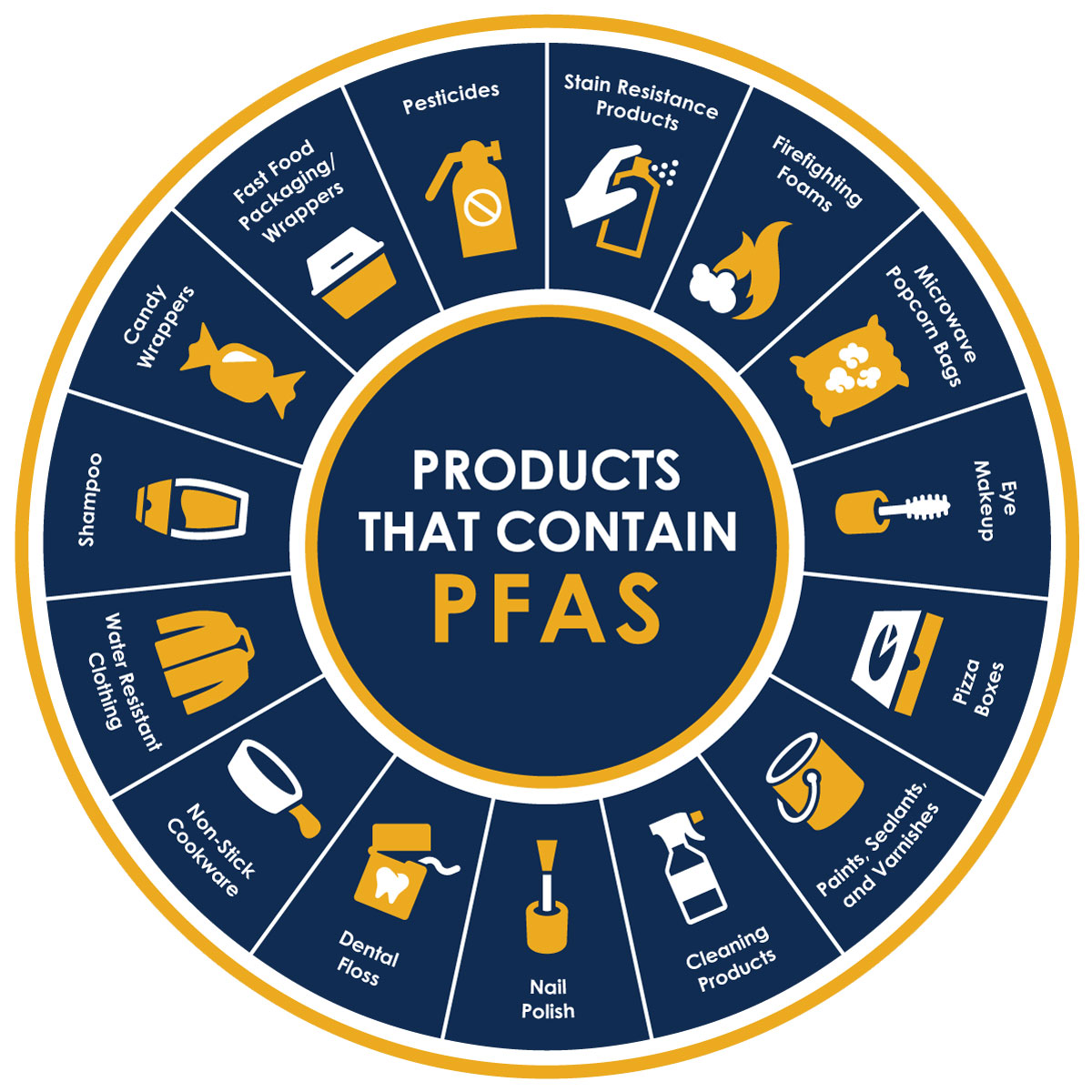PFAS: Hard to escape in food, clothes, and makeup
A multi-part investigation found PFAS contamination ubiquitous in consumer products. Here's what you can do about it.
EHN.org, in partnership with the website Mamavation.com,
spent the bulk of 2022 finding PFAS in scores of everyday products. Our
findings suggest these troublesome chemicals are on our shelves, in our bodies,
and almost impossible to avoid.
Surprisingly, many brands that tout clean and green credentials – like Lululemon, Burt’s Bees, Trader Joe’s – are contaminated with PFAS, according to our investigation.
PFAS—a family of plastic additives that
contribute to cancer, reproductive and immune system damages, elevated
cholesterol, and other health issues—remain largely unregulated, leaving
consumers to fend for themselves.
The collaboration between EHN.org and wellness community Mamavation looked
for fluorine, an indicator of PFAS, short for per- and polyfluoroalkyl
substances. We found contamination in clothing, food, and makeup products from
popular brands like Lululemon, Old Navy, Burt’s Bees, Whole Foods, and Trader
Joe’s.
It is not entirely clear what this exposure—especially from
clothing—means for our health. But experts say it contributes to our overall
load of PFAS.
The problem feels overwhelming, but you can act. Share our
series with people in power that shape policy, learn about the brands and
products with the highest levels, and subscribe to our daily newsletter where
we will keep you informed of all the movement on PFAS pollution and regulation.
You can see the entire investigative series here.
Some highlights
- Evidence of PFAS in 15 of 23 popular sports bras, and in eight of 32 workout pants and leggings—with fluorine levels as high as 284 parts per million (LulaRoe Leggings).
- Evidence of PFAS in 54 of 83 lipsticks, mascaras, and other beauty products tested—with fluorine levels as high as 865 ppm (Clove & Hallow Lip Velvet Liquid Lipstick).
- Evidence of PFAS in canola cooking oils, and pasta sauces.
“Every single woman who's working out in the United States, I
promise if you ask her, “Do you want a chemical on your athletic wear that is
linked to metabolism woes and weight gain and vaccine issues,” [she] will say
no,” Leah Segedie, founder of eco-wellness and consumer safety blog Mamavation,
which commissioned the testing, told EHN.
Testing for PFAS is tricky—for scientists, industry, and
nonprofits like us.
Here
are some important takeaways about testing and contamination
Testing for PFAS—a family of 8,000 to 9,000 individual
compounds—is expensive, hard, and imperfect. We used an accredited lab and, in
testing some products more than once, found different levels for each test.
There is no standardized test for checking products for PFAS.
Many companies—especially clean beauty brands—expressed a desire
for standardized, affordable testing.
Some products, such as outdoor clothing, may have PFAS
intentionally added for water or stain resistance. However, we found evidence that these “forever
chemicals” can unintentionally contaminate consumer goods in many
ways—including manufacturing lubricants and coatings, misidentified raw materials,
even plastic packaging.
PFAS is so pervasive in society that many manufacturers
cannot—or simply will not—get accurate information about what's in their
products.
“Oftentimes, those suppliers don't know the answers to the
questions you're asking even though they should be the expert, or they don't
want to look for the answers because they don't want to tell you what it
is," Lindsay Dahl, senior vice president at the clean cosmetics brand
Beautycounter, told EHN. "Or they just flat out send you a piece of paper
that says whatever you want it to say.”
PFAS are largely unregulated in the U.S. and the bulk of
attention remains on the chemicals in our drinking water, which experts suspect
is the major exposure route. There are an estimated 40,000 U.S. sites that are
potential PFAS sources, and state and federal data shows roughly 200 million
Americans may have PFAS-contaminated water.
Bans
and legislative movement
Lawsuits target
companies with PFAS in their products, especially in cosmetics. Toxin Free USA sued CoverGirl; Burt’s Bees faces a
class action lawsuit filed in February based on the Mamavation testing.
Third-party certifications give
consumers more knowledge. While a step in the right direction, researchers warn
these remain imperfect with some allowing too many toxics in “passing” grades.
In April, Starbucks announced it will eliminate
PFAS from all U.S. packaging by the end of 2022. Burger King, Tim Hortons, Taco
Bell, and McDonald’s have all announced similar bans.
Also in April, Washington state passed a bill to phase
out PFAS in select consumer products by 2025. Maine banned the sale of
PFAS in all products, including cosmetics, except when their use was
"currently unavoidable," starting in 2030. California and Maryland banned the
sale of any cosmetics with some PFAS starting in 2025.
The EPA last month added five PFAS chemicals to
its screening and risk assessment program.
A House Committee recently approved the Federal PFAS Research Evaluation
Act, which directs federal agencies to research and advance our
understanding of PFAS.
There’s a federal bill in the works — “No PFAS in Cosmetics
Act,” introduced by Sen. Susan Collins, R-ME in the Senate and
Rep. Debbie Dingell, D-MI, in the House.
Given our findings, and the glacial pace of federal action when
it comes to toxic chemicals, this can all feel overwhelming.
But
there are things you can do
Learn the essentials about PFAS with our comprehensive guide.
Put pressure on manufacturers by sharing this investigation and
asking for evidence that products you're buying are PFAS-free.
Sign up for Above the Fold, our free daily
newsletter that gives subscribers the “need to know” news every morning on PFAS
and other ongoing environmental threats.
Visit Mamavation and go to Product
Investigations for suggestions on food, clothing, and makeup that appears
PFAS-free.
